5 Keys to Solar Panel Protection and Ownership
Last updated at
The green revolution creates a constant push-push-push to install solar energy systems. Communities around the world have seen millions of solar systems installed. A well-functioning solar electric system should last 30-40 years. Like most other investments with long term benefits, periodic checkups are prudent.
Most solar system owners think that solar systems do not require maintenance. Unfortunately, some homeowners are starting to face surprising problems.
In the beginning, their electric bills were very low. But over time, the costs start to creep up, causing homeowners to wonder if their solar system is even working.
Problems can seem to be merely cosmetic but may pose serious safety problems and fire hazards. Some problems can create a domino effect, causing unhealthy situations around the purchaser's home.
The simple list of keys to protect your solar panels
- Prevent birds nesting under solar arrays.
- Prevent rodents access to wires underneath solar panels
- Guard solar panels exposed to golf balls and baseballs.
- Block hail from solar panels.
- Periodically check and monitor solar system performance
Pigeons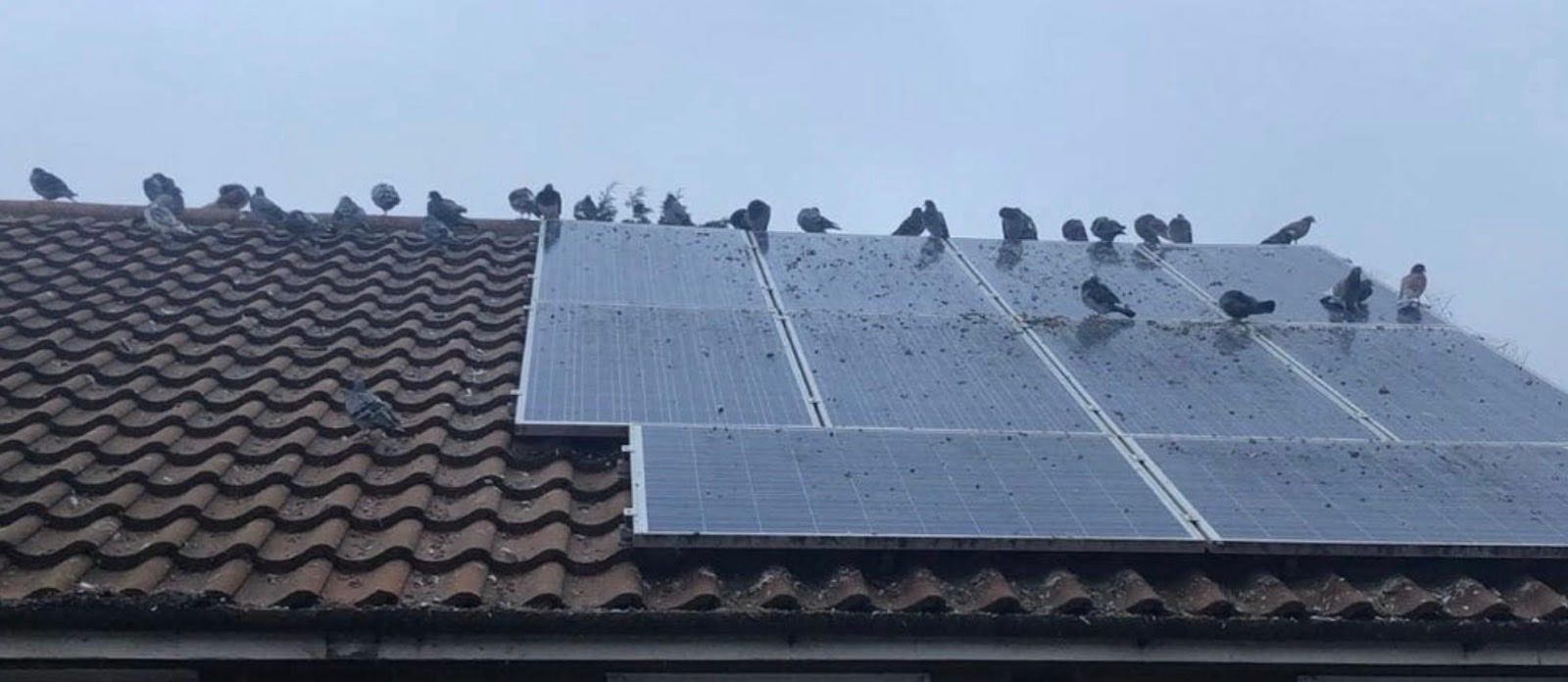
Birds will take up residence between the solar arrays and the roof surface.
They typically prefer cooler areas, so they will shy away from solar panels that receive the late afternoon sun. Families of birds immediately start spreading their droppings. The literal 'piles of waste' dry out and harden under the solar panels.
When it rains, the flow of water is disrupted by the mounds of poop, causing turbulence as water re-routes around the poop buildup. Homes with tile roofs are particularly prone to have water leaks due to such turbulence. It is important to realize the water that leaks into living spaces is poop-filled water, not clean water.
The best method to prevent bird problems is to install wire mesh around the perimeter of the entire solar array. This essentially creates a perimeter wall from the solar panel to the roof.
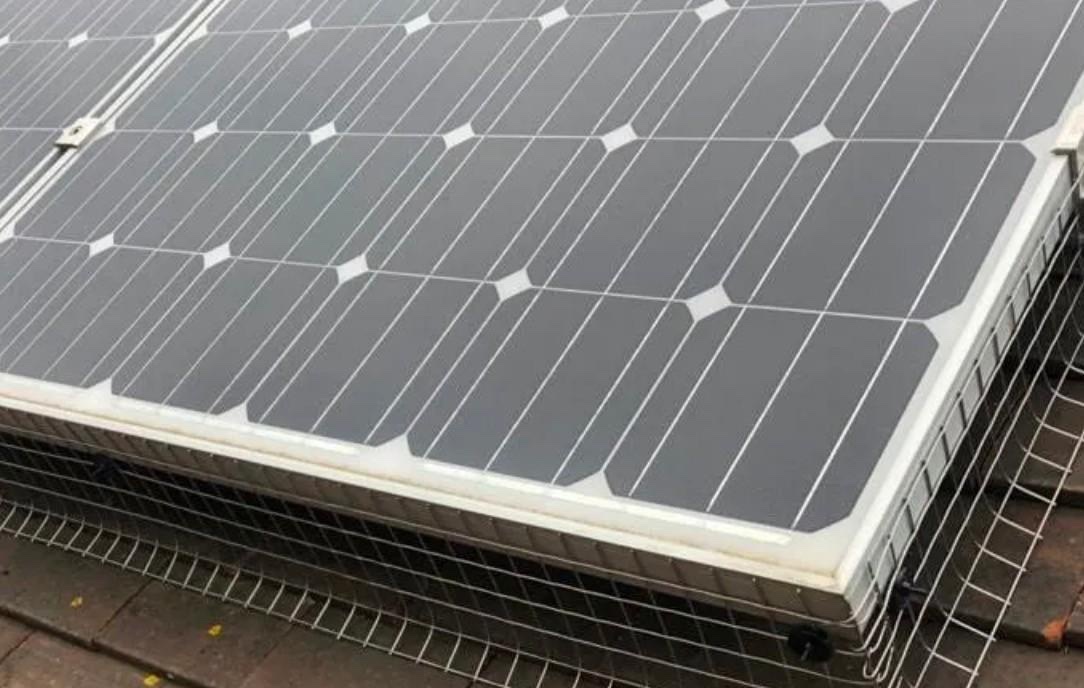
In the example image above, PVC coated wire is secured to the edge of solar panels by self- cinching wire hooks. All hardware is designed to be corrosion resistant. The wire mesh extends down to the roof surface, and is bent flush to deter ‘push-through’ access.
Rodents and Squirrels
Squirrel and rodent infestation can be a very daunting problem. Once squirrels build a nest, they can be virtually impossible to keep out. They have even been known to chew through walls when attempting to return to their nests.

Squirrels bring more than fecal matter to the party. They accumulate paper and cloth in their nest-building projects. This buildup of flammable materials can be lit ablaze when a chewed wire sparks against the metal frame supporting the solar panels.
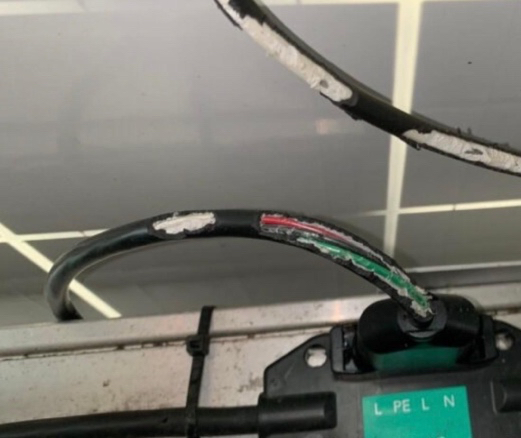
Rodents like to chew off insulation from the PV wires connecting between neighboring solar panels. Often dead animals are discovered with the wire still in their mouth. The shock of high voltage solar circuits electrocutes the small animals.
Rodents can be blocked by this same protective mesh when it is carefully installed to eliminate all holes. It is particularly important to tightly wrap the blocking mesh around the solar panel corners in order to avoid corner-gaps.

By far the best solution is to prevent the initial infestation by blocking access to the under-panel spaces. Most importantly, never feed squirrels, as it encourages them to take up residence at your home.
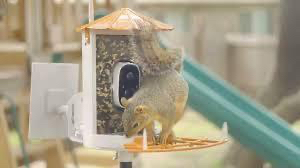
Golf Ball Damage

Solar panel damage by golf balls and baseballs has become commonplace. Eager solar sales teams equate hail damage with golf ball damage. If 1-inch hail is not a problem, then a 1.75-inch golf ball should not be a problem.
WRONG!
The energy of golf balls and baseballs is many times greater than that of falling hail.
Solar systems with broken solar panel glass cannot be cleaned due to the danger of water spray causing “Ground Faults” in the inverter equipment. This will cause the entire system to shut down
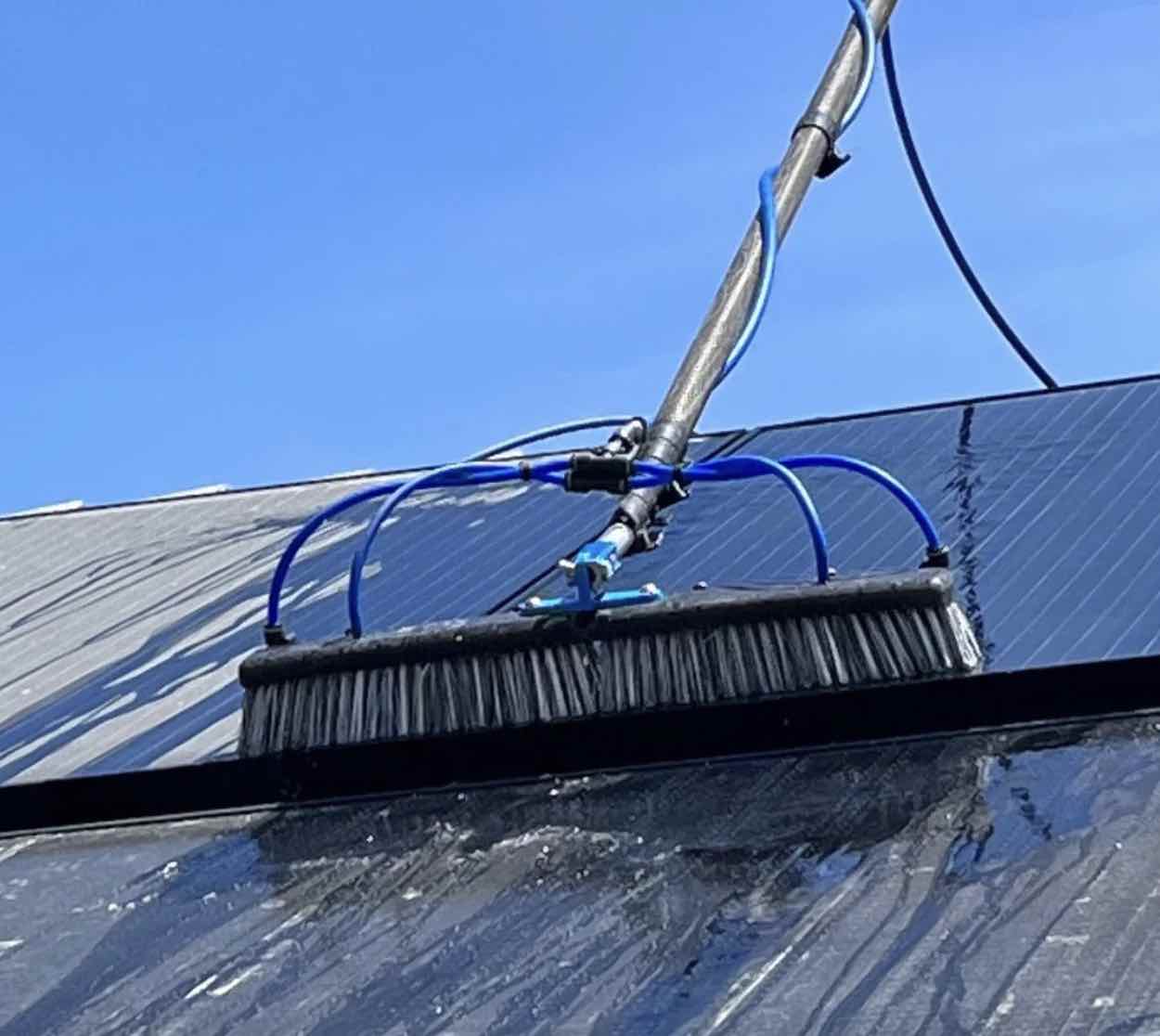
Homes located at the side or end of fairways are at the greatest risk. Pro golfers are not the problem; it is amateur swings that produce the most errant balls.

One homeowner in Monterey CA had a particular problem caused by the prevailing ocean breeze. Even the best golfers would frequently see their balls blown off-course, directly into the row of houses along side of the fairway,
Installing a protective net is one solution for preventing golf ball damage. Nets can be stretched across the solar panel array, with enough space for the net to absorb the energy of the incoming balls.
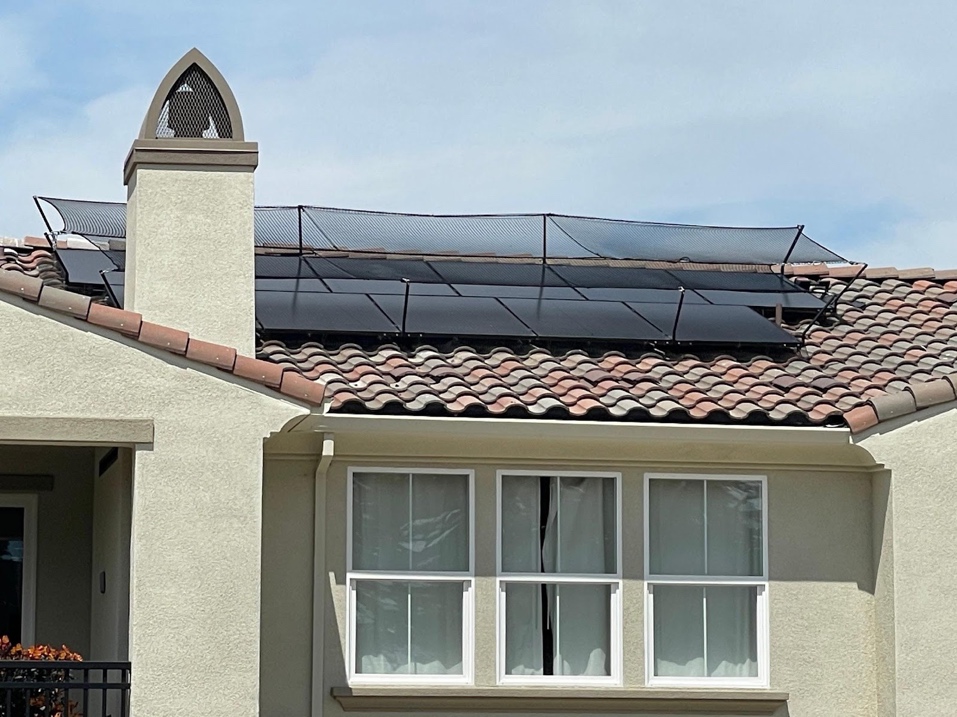
The photo on right shows a net supported by brackets attached directly to the solar module frames. (Courtesy of www.solarnets.com)
This installation method is desirable since it does not require screwing into the roof surface. Plus, the net can be removed during the winter to avoid snow.
Baseball Damage
Similarly, baseballs can significantly damage solar panels. Below is a satellite image showing a solar carport near the outfield of a high school baseball field. This carport had more than 20 broken panels before deciding to install barrier nets.

Below is a zoomed image of a damaged 225-ft solar array shows more than 20 solar panels broken by baseballs.

Even an individual homeowner living near a baseball field can fall victim to a teenage slugger.
But a determined DIY homeowner can install a simple solar panel protection barrier net to stop the damage.
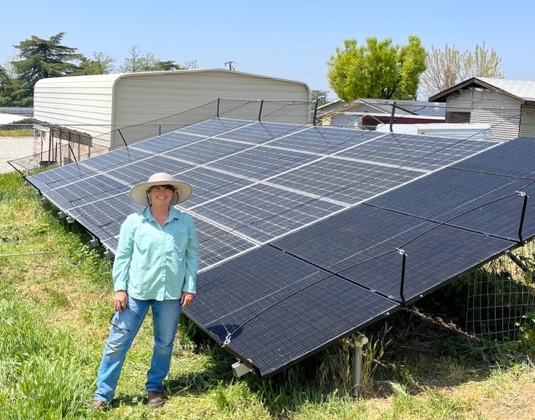 (https://www.solarnets.com/products/baseball-catcher-net)
(https://www.solarnets.com/products/baseball-catcher-net)
Hail Damage
Hailstorms can produce the most widespread damage to solar panel installations. A single seasonal hailstorm can damage solar arrays for miles around, impacting entire communities.

When some of the modules in a solar array are broken, it creates questions about whether the other panels on micro cracks, that over time will also cause the entire surface to fracture, much like a small crack in a car windshield will spread over time.
The unpredictable nature of falling hailstones can produce seemingly insurmountable problems. Windspeed and the recycling nature of hailstorms causes the size and speed of hail stone to vary wildly. It often takes only one large impact to weaken the glass on a solar panel, then any later impacts by smaller hailstones will fracture the entire glass surface. Others remain unbroken.
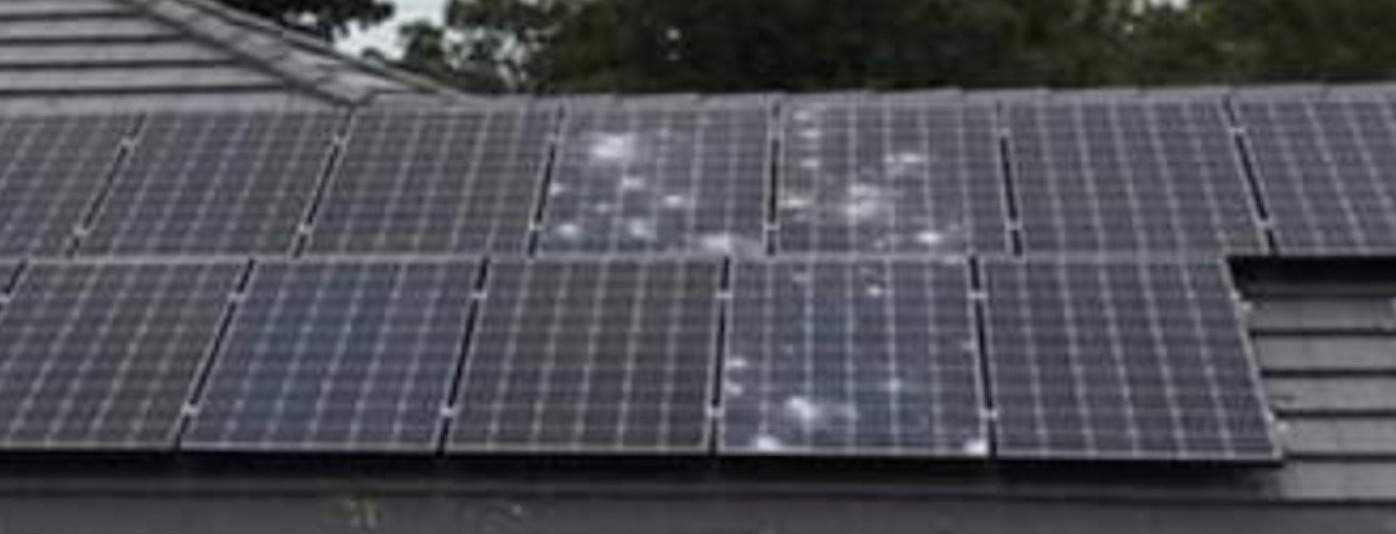
Hail Blocker Nets provided by www.solarnets.com are specifically designed to minimize the possibility of hail damage. The nets are designed to block hail larger than 1-inch in diameter.
System Checkups and Monitoring
Periodic checking of solar system performance is the only sure-fire way to avoid surprises in your electric bill. Often a periodic solar panel maintenance cleaning will reveal emerging problems.
Net Metering programs with most utilities provide a monthly statement indicating the cost savings provided by a solar system. Since some months have better solar production than others, with the winter being weak and the summer being strong. Utilities simply accumulate the charges for 12-months and send a single TRUE-UP bill once a year. If homeowners ignore the monthly statements, a system failure may result in many months of lost energy production.
Without routine checking of solar production, the system owner may believe all is well, only to later learn that equipment failure has disabled his solar energy production. A large electric bill is accumulating and can easily total thousands of dollars.
Most solar equipment has online reporting of production history. Generally, new solar system owners start out closely monitoring their system performance. However, day-to-day routines eventually take precedence over keeping an eye on your solar system. Ultimately most homeowners even forget how to check the system production. Below is a typical diagram available from an online monitoring site for a residential solar system.
Maintenance and monitoring system services are now becoming more widely available. Most service companies can remotely monitor your system performance and notify you when a problem is observed. Organizations like Solar Servco offer monthly monitoring and repairs services. In most cases, the cost of an annual monitoring service is less than one month of lost energy production due to a failed system.
Conclusion
Get your solar system installed with the much-needed solar panel protection safeguards. The above challenges point out the importance of getting your system installed with the necessary solar panel protection against the common problem sources before the damage occurs. If you have pigeons or squirrels nearby, get protective wire mesh. If you live close to sporting venues, get barrier nets to protect the panels. If you are not willing to personally keep an eye on your solar energy production, subscribe to a service company.
Often the protective equipment only increases the system cost by a small percentage. But in the end, that small additional cost may be key to preventing complete system failure over the long term. Protecting your equipment is a good investment
In the end, solar systems are like most other items associated with home ownership. Periodic checkups are a prudent component to ensure reliable system performance. Ultimately most solar systems are purchased to save the homeowner money. Keeping an eye on your system is the best insurance.